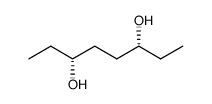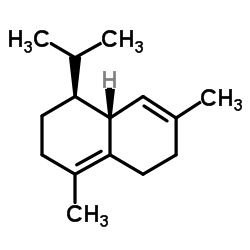136779-28-7
| Name | (2S,5S)-1-[2-[(2S,5S)-2,5-diethylphospholan-1-yl]phenyl]-2,5-diethylphospholane |
|---|---|
| Synonyms |
unii-fri8026kma
MFCD00142321 |
| Density | 1.010 g/mL at 25ºC |
|---|---|
| Boiling Point | 468.5ºC at 760 mmHg |
| Molecular Formula | C22H36P2 |
| Molecular Weight | 362.46900 |
| Flash Point | >230 °F |
| Exact Mass | 362.22900 |
| PSA | 27.18000 |
| LogP | 6.60300 |
| Vapour Pressure | 1.67E-08mmHg at 25°C |
| Index of Refraction | n20/D 1.581 |
|
Section 1: Product Identification Chemical Name:(+)-1,2-Bis((2S,5S)-2,5-diethylphospholano)benzene, 98+% (S,S)-Et-DUPHOS CAS Registry Number:136779-28-7 Formula:C22H36P2 EINECS Number:none Chemical Family:organophosphine ligand Synonym:(S,S)-Ethyl DUPHOS
Section 2: Composition and Information on Ingredients IngredientCAS NumberPercentACGIH (TWA)OSHA (PEL) Title Compound136779-28-7100%no datano data Section 3: Hazards Identification Emergency Overview:Irritating to eyes, skin and respiratory tract. Primary Routes of Exposure:Ingestion, skin Eye Contact:Causes slight to mild irritation of the eyes. Skin Contact:Causes slight to mild irritation of the skin. Inhalation:Irritating to the nose, mucous membranes and respiratory tract. Ingestion:No specific information is available on the physiological effects of ingestion. Acute Health Affects:Irritating to skin, eyes and respiratory tract. Chronic Health Affects:No information available on long-term chronic effects. NTP:No IARC:No OSHA:No SECTION 4: First Aid Measures Immediately flush the eyes with copious amounts of water for at least 10-15 minutes. A victim may need Eye Exposure: assistance in keeping their eye lids open. Get immediate medical attention. Wash the affected area with water. Remove contaminated clothes if necessary. Seek medical assistance if Skin Exposure: irritation persists. Remove the victim to fresh air. Closely monitor the victim for signs of respiratory problems, such as difficulty Inhalation: in breathing, coughing, wheezing, or pain. In such cases seek immediate medical assistance. Seek medical attention immediately. Keep the victim calm. Give the victim water (only if conscious). Induce Ingestion: vomiting only if directed by medical personnel. SECTION 5: Fire Fighting Measures Flash Point:no data Autoignition Temperature:none Explosion Limits:none Extinguishing Medium:carbon dioxide, dry powder or foam Fire fighters should be equipped with a NIOSH approved positive pressure self-contained breathing apparatus Special Fire Fighting Procedures: and full protective clothing. Hazardous Combustion andIf involved in a fire this material may emit toxic organic fumes. Decomposion Products: Unusual Fire or Explosion Hazards: No unusual fire or explosion hazards. SECTION 6: Accidental Release Measures Spill and Leak Procedures:Small spills can be mixed with vermiculite, sodium carbonate or other suitable adsorbent, and swept up. SECTION 7: Handling and Storage Store in a tightly sealed container under an inert atmosphere of nitrogen or argon. Keep away from heat and Handling and Storage: direct sunlight. SECTION 8: Exposure Controls and Personal Protection Eye Protection:Always wear approved safety glasses when handling a chemical substance in the laboratory. Skin Protection:Wear protective clothing and gloves. Ventilation:If possible, handle the material in an efficient fume hood. If ventilation is not available a respirator should be worn. The use of respirators requires a Respirator Respirator: Protection Program to be in compliance with 29 CFR 1910.134. Ventilation:If possible, handle the material in an efficient fume hood. Additional Protection:No additional protection required. SECTION 9: Physical and Chemical Properties Color and Form:colorless oil Molecular Weight:362.48 Melting Point:no data Boiling Point:no data Vapor Pressure:no data Specific Gravity:no data Odor:none Solubility in Water:insoluble SECTION 10: Stability and Reactivity Stability:air sensitive liquid Hazardous Polymerization:no hazardous polymerization Conditions to Avoid:prolonged contact with air Incompatibility:oxidizing agents, halogens Decomposition Products:carbon dioxide, carbon monoxide, phosphorus pentoxide, and organic fumes. SECTION 11: Toxicological Information RTECS Data:No information available in the RTECS files. Carcinogenic Effects:No data available Mutagenic Effects:No data available Tetratogenic Effects:No data available SECTION 12: Ecological Information Ecological Information:No information available SECTION 13: Disposal Considerations Disposal:Dispose of according to local, state and federal regulations. SECTION 14: Transportation Shipping Name (CFR):Non-hazardous Hazard Class (CFR):NA Additional Hazard Class (CFR):NA Packaging Group (CFR):NA UN ID Number (CFR):NA Shipping Name (IATA):Non-hazardous Hazard Class (IATA):NA Additional Hazard Class (IATA):NA Packaging Group (IATA):NA UN ID Number (IATA):NA SECTION 15: Regulatory Information TSCA:Not listed in the TSCA inventory. SARA (Title 313):Title compound not listed. Second Ingredient:none SECTION 16 - ADDITIONAL INFORMATION N/A |
| Symbol |

GHS07 |
|---|---|
| Signal Word | Warning |
| Hazard Statements | H315-H319-H335 |
| Precautionary Statements | P261-P305 + P351 + P338 |
| Personal Protective Equipment | Eyeshields;full-face respirator (US);Gloves;multi-purpose combination respirator cartridge (US);type ABEK (EN14387) respirator filter |
| Hazard Codes | Xi |
| Risk Phrases | R36/37/38 |
| Safety Phrases | S26 |
| RIDADR | NONH for all modes of transport |
|
~% 
136779-28-7 |
| Literature: Burk, Mark J. Journal of the American Chemical Society, 1991 , vol. 113, # 22 p. 8518 - 8519 |
|
~% 
136779-28-7 |
| Literature: Burk, Mark J. Journal of the American Chemical Society, 1991 , vol. 113, # 22 p. 8518 - 8519 |
| Precursor 2 | |
|---|---|
| DownStream 0 | |


